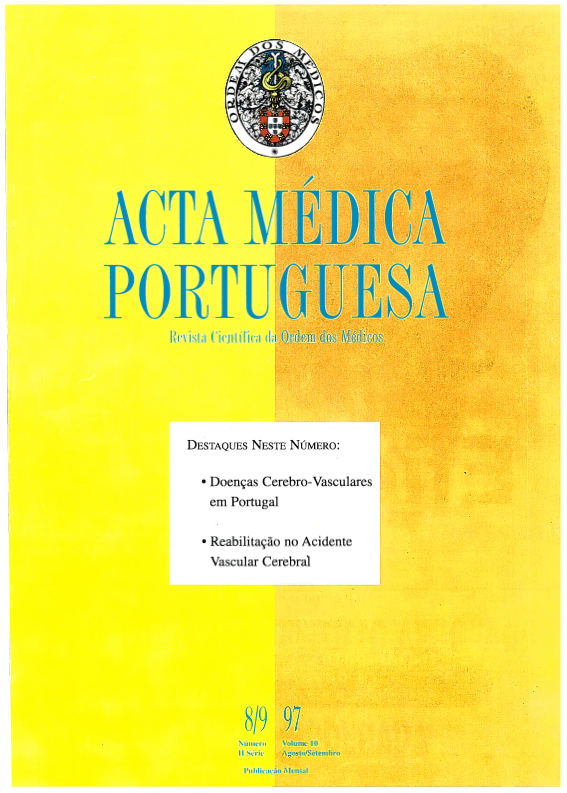Fibrinólise no AVC agudo: estado actual.
DOI:
https://doi.org/10.20344/amp.2456Resumo
The use of thrombolytic therapy in acute ischemic stroke is still today a somewhat controversial subject. We come across authors who defend its undisputed use in adequately selected cases, others who are more sceptical and habitually place a question mark on this subject and a third group in expectation. Intra-arterial thrombolysis has very precise indications, its use in vertebrobasilar ischemic stroke remains inconclusive, eventually with a wider window. Five important randomised studies have taken place in recent years with thrombolysis administered intravenously. All three studies with Estreptoquinase--MAST-E, MAST-I and ASK--ended prematurely due to the high rates of mortality and intracranial haemorrhage observed in the group of patients treated with this drug. From the two main studies with rt-PA-ECASS and NINDS, the American trial showed somewhat higher results. The Guidelines from the American Heart Association for the use of rt-PA in ischemic stroke are presented. Fibrinolysis, when successful, only permits the restoration of blood flow in the area of ischemic suffering. This implies that, simultaneously, other therapeutic measures will have to be implemented.Downloads
Downloads
Como Citar
Edição
Secção
Licença
Todos os artigos publicados na AMP são de acesso aberto e cumprem os requisitos das agências de financiamento ou instituições académicas. Relativamente à utilização por terceiros a AMP rege-se pelos termos da licença Creative Commons ‘Atribuição – Uso Não-Comercial – (CC-BY-NC)’.
É da responsabilidade do autor obter permissão para reproduzir figuras, tabelas, etc., de outras publicações. Após a aceitação de um artigo, os autores serão convidados a preencher uma “Declaração de Responsabilidade Autoral e Partilha de Direitos de Autor “(http://www.actamedicaportuguesa.com/info/AMP-NormasPublicacao.pdf) e a “Declaração de Potenciais Conflitos de Interesse” (http://www.icmje.org/conflicts-of-interest) do ICMJE. Será enviado um e-mail ao autor correspondente, confirmando a receção do manuscrito.
Após a publicação, os autores ficam autorizados a disponibilizar os seus artigos em repositórios das suas instituições de origem, desde que mencionem sempre onde foram publicados e de acordo com a licença Creative Commons









